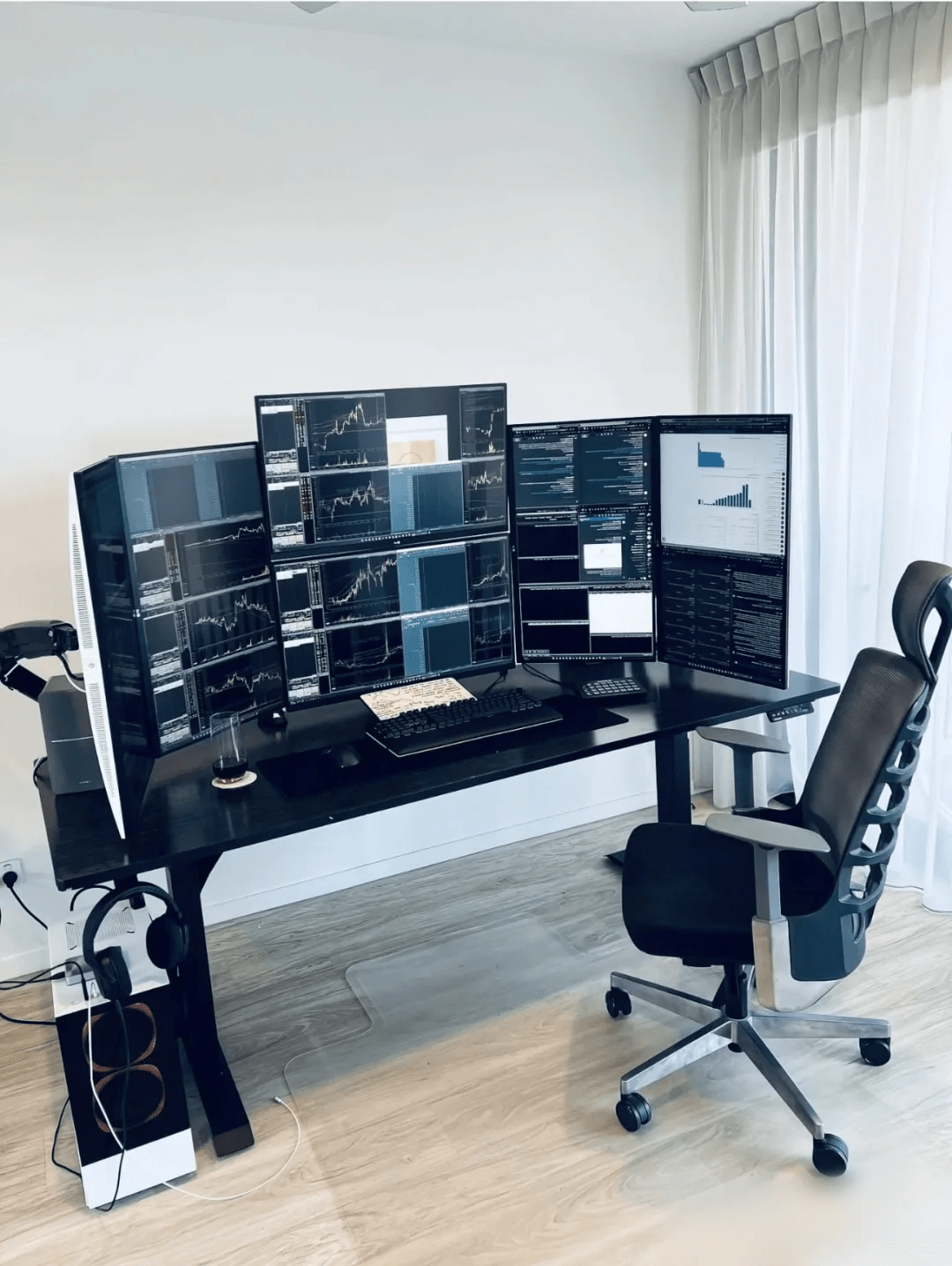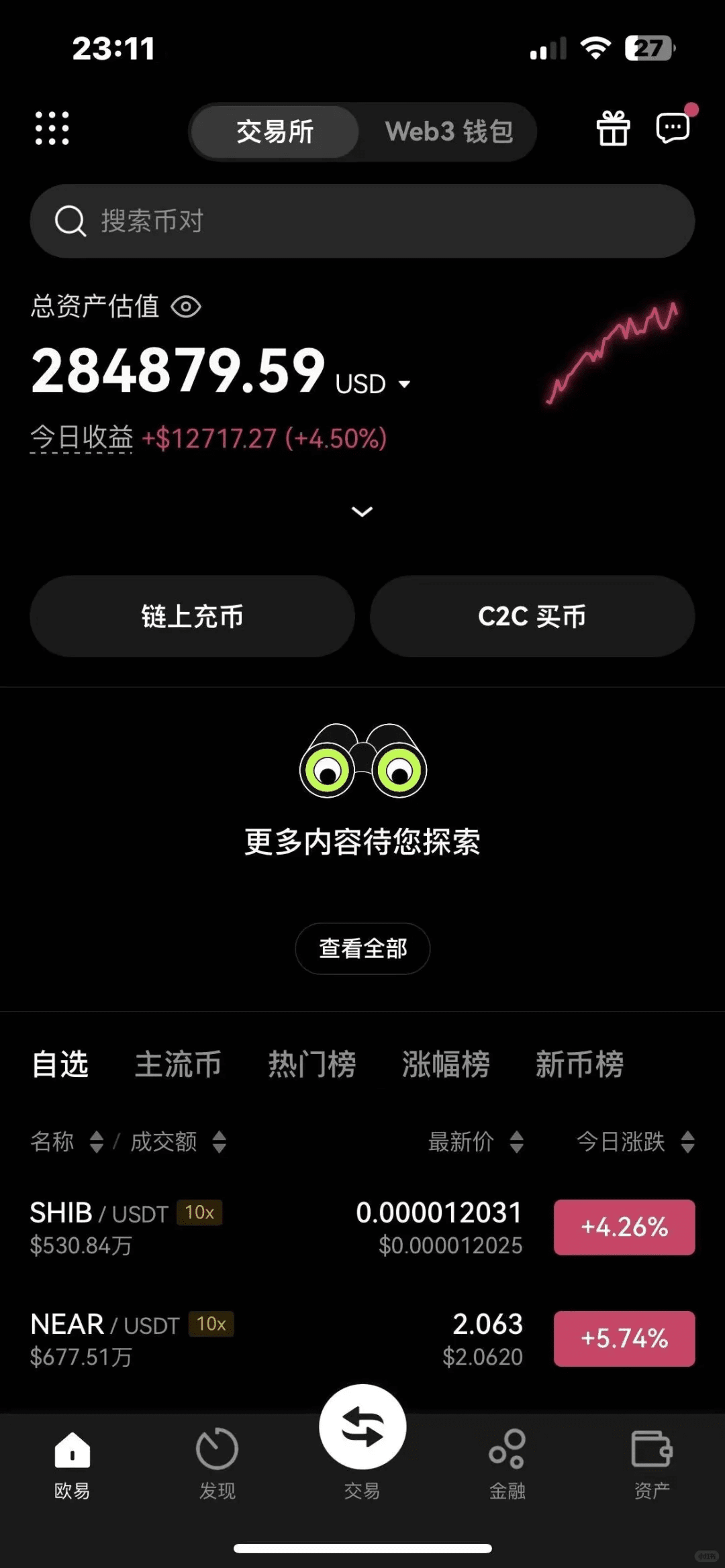True short-term trading experts only need to glance at the intraday chart to accurately judge the strength or weakness of a coin. If you want to profit quickly in short-term trading, you must master these nine intraday chart patterns. Once understood, you will no longer waste time on weak coins. For crypto players who favor ultra-short-term and T+ trading, intraday charts are a crucial reference, as they provide feedback information at lightning speed. The main force often leaves subtle signals in the intraday chart before selling or pushing up. Learning to identify these signals will clarify the directional judgment of subsequent trends and make operational thinking much clearer.

One, Cognitive Restructuring: The underlying logic starting from 3000.
The mathematical password for capital amplification:
3000 Yuan × (1 + Monthly Return Rate 20%)^12 ≈ 23,000 Yuan—The core of this formula is not to pursue a single month's 50% windfall, but rather a stable monthly compound interest of 20%. 90% of new entrants in the crypto space fail due to a 'gambler's mentality', constantly fantasizing about doubling their investment overnight while neglecting that 'sustained profit' is the foundation of capital growth.
Technical Cognitive Course that Newcomers Must Pass:
Blockchain Underlying Architecture: In-depth reading (Bitcoin Whitepaper) to understand the UTXO model, thoroughly grasping the gas mechanism of smart contracts in (Ethereum Yellow Paper), and breaking down market cap logic by comparing (CoinMarketCap's top 20 coins)—trading without understanding value support is just betting on K-line colors.
Exchange Practical Sandbox: Complete 30 hours of closed-loop training with a simulated account: From OKX's 'Limit Order Trigger Mechanism' to Binance's 'Spot Leverage Rate Calculation', from withdrawal address verification to comparing transaction fees for cold and hot wallets, every operational error could consume profits.
Building a Risk Database: Reviewing the 'Death Spiral of Staking Rate' during the collapse of LUNA algorithmic stablecoin, breaking down the 'Balance Sheet Fraud Signals' before the FTX collapse—history does not repeat itself, but the logic of crashes is always similar.
Two, 3000 Yuan Combat Plan: Precise layout using time to exchange for space.
Technical anchor points for phase goals:
1st Month: Break-even is victory. Focus on recording the 'frequency of ineffective trades' (more than 2 trades per day is a dangerous signal), use the stop-loss settings of the simulated account to reverse engineer real trading operations—at this time your opponent is not the market, but your own rashness.
3-6 Months: The critical point for doubling funds. When the weekly line stands firm at MA20 for 3 consecutive times and the monthly MACD histogram turns from green to red, it indicates that trend momentum accumulation is complete, with an annualized return of 126% not being luck, but the inevitability of the trend.
1-Year Period: Technical verification of 3-5 times returns. By conducting a correlation analysis between the 'monthly volatility averages of the top 5 coins' and the 'account fund curve', when the fitting degree exceeds 70%, it indicates that your operations have moved away from emotional decision-making.
Three, the three core strategies of the foolish method: Reject mysticism, only recognize data.
Strategy 1: Ant-like incremental investment quantitative logic.
Coin Selection Rule: Top 5 by Market Cap + Listed for over 3 years. Being in the top 5 by market cap means a liquidity safety net, and being listed for 3 years filters out 90% of 'rug pull risks' (referencing that in the 2022 bear market, the average decline of the top 5 coins was 42% lower than that of smaller coins).
Buying Rhythm: Invest 200 Yuan every Wednesday at 15:00 (UTC+8). Backtesting data shows this time period is a low point in global trading volume, with a slippage rate 0.8%-1.2% lower than peak times, potentially saving nearly 300 Yuan in extra costs over 16 months.
Strategy 2: Signal verification of the monthly line breakthrough strategy.
On the 1st of each month, filter for coins with a monthly MACD golden cross: When the DIFF line crosses the DEA line from below, and the histogram turns red for the first time, the probability of trend reversal reaches 73% (backtested on data from 2018-2023).
Secondary Filtering: Weekly trading volume must increase continuously for 2 weeks by 30%+. Divergence between volume and price is a typical signal of a false breakout; for example, when Bitcoin faked a breakout at 40,000 USD in 2021, the weekly trading volume only increased by 18%.
Entry Point Accuracy: Enter when pulling back to the 5-week moving average. This position is both a short-term support level and the cost line of market participants' battles. After Ethereum's two monthly line breakthroughs in 2023, the success rate of rebounds when pulling back to the 5-week moving average reached 89%.
Strategy 3: The contrarian thinking of panic index arbitrage.
Tool: Alternative.me Fear and Greed Index. Data shows that when the index is <20 (extreme fear), the average price increase of coins one month later reaches 15%; when the index > 80 (extreme greed), the probability of a pullback within 2 weeks exceeds 80%.
Operational Discipline: Use 30% cash to average down during extreme fear (to avoid being fully invested and missing out), and reduce holdings in 3 batches of 20% during extreme greed (to prevent selling into a rally). In November 2022, when FTX collapsed, the index fell to 10, and the funds averaged a return of 40% after 60 days when averaged down.
Four, the four firewalls of risk control: Only by surviving can one qualify to make money.
Single Coin Limit 20%: Mathematically, when a single coin drops by 50%, its impact on the total position is controlled to within 10%, leaving sufficient rebound buffer space for other coins.
5% Circuit Breaker Mechanism: If daily losses exceed 5%, trading is immediately paused for 3 days. During the second collapse of LUNA in 2023, accounts adhering to this rule lost 62% less than those who held out.
Withdraw Principal after 30% Profit: Each time a 30% profit point is reached, immediately withdraw 10% of the initial principal (e.g., with a principal of 3000 Yuan, withdraw 300 Yuan after the first profit). After 16 months, your principal will have all been cashed out, and what remains is 'risk-free profit'.
Monitor the market for 1 hour daily: Beyond this time, decision-making errors increase by 37% (behavioral finance experimental data). Set a fixed monitoring period from 15:00 to 16:00, using limit orders instead of real-time operations.
Five, the true growth trajectory: Data does not lie.
1st Month Loss of 15%: This is the 'transaction fee cognitive tax' (frequent trading generated 18 transaction fees, accounting for 5.3% of the principal).
3rd Month Break-Even + 8%: After mastering the '5-week moving average buying point', two ineffective pullbacks were avoided.
6th Month Breakthrough 5000 Yuan: Dollar-cost averaging Bitcoin starts to contribute to compound interest, at this time the holding cost is 12% lower than the market price.
12th Month 18,000 Yuan: The monthly line breakthrough strategy captured Ethereum's two major upward trends, with a single return of 45%.
16th Month 50,000 Yuan: Panic index arbitrage accurately bottomed during the Silicon Valley Bank incident in March 2023, achieving a 68% return.
Remember: The 'foolish method' in the crypto space is essentially about using rules to counter human nature. When you can execute strategies like a machine—investing when others chase up, averaging down when others panic, and cashing out when others are greedy—transforming from 3000 to 50000 in 16 months is merely an inevitable outcome.
Open Excel now and create your 'Capital Curve Tracking Sheet'. Slow is fast; those who live long will ultimately win.

If you don't understand the technical breakdown of cryptocurrencies, like + follow @加密大师兄888 . Mastering both spot and futures trading, I will help you avoid 99% of investment traps—choosing the right guide is more important than staying up late watching the market.
